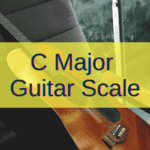Chord progressions are the backbone of music.
Yes, the intervals between chords tell a story that grows and morphs supporting the one being told by the melody and lyrics.
So, can we generate beauty to build more beauty on top and make our audience smile? Yes, we can.
Moreover, you’re in the right spot because we’re about to unveil the mechanics of chord progressions, give you a few tips to go from key to key without losing the magic, and finish it all off with 15 groundbreaking, breathtaking, beautiful chord progressions for you to play with and have fun.
Are you ready to sail to the very core of beauty in the form of chords?
Get on board, because here we go!
Let’s Talk Minors and Majors
Minors and majors are like two sides of the same coin.
The thing is that we need both to generate beauty and emotion.
Yes, if you hear a song that’s completely made of major chords and there’s no variation in the emotion, you might not be hooked.
On the other hand, when you start mixing things up within the progressions or the song, the clash of different flavors creates something more interesting than the mere sum of the parts.
So, as a gross summary, we could say that minor chords and scales tend to sound sad and dark and are somewhat of a downer.
Major scales and chords, on the opposite, sound huge and full and ooze a sense of completeness and upbeat emotion that has fueled pop hits since day one.
Why is this important? You might be thinking.
Well, the answer to that question is very simple: you must know both sides of the coin to use it as currency in the music world.
Therefore, when you start understanding the difference between major and minor and start using it in your favor, you can begin to control what kind of emotions you want to convey.
Furthermore, you can put the chords of your song to work in making a better foundation for your lyrics.
Minors for Verses & Majors for Choruses?
The title is something that most musicians do when pivoting between majors and minors.
For example, this was a huge part of the grunge and nü metal movements.
Do you remember how in the ‘90s and the 2000s, verses were super small and usually dark while the chorus exploded with huge guitars and massive singalongs?
Well, there’s a method behind that phenomenon: using minor chords, progressions, and scales for verses and pivoting to major chords and scales for the choruses.
But how do we create that pivoting effect?
Well, read on because you’re about to learn the one and only “borrowed chord” technique.
Finding the Scale, Settling on the Chords
Before we go to the “borrowed chord” technique, we need to go through the major and minor scales and the almighty (insert epic evil laughter here) “circle of fifths”.
Don’t worry, it doesn’t involve any talismans or circles on the ground or even going to Mordor with any rings.
So, jokes aside, let’s get started.
First, let’s review the quintessential major and minor scales (also known as Ionian and Aeolian modes).
This is the C Major Scale in all its splendor:
| C Major Scale | ||||||
| I | II | III | IV | V | VI | VII |
| C | Dm | Em | F | G | Am | B dim |
| W | W | H | W | W | W | H |
As you can see, there are major and minor chords involved in the scale except for the seventh degree that’s diminished.
Now, if we look at the Minor Scale, we get something very similar, but at the same time, very different. Let’s see:
| A Minor Scale | ||||||
| I | II | III | IV | V | VI | VII |
| Am | B dim | C | Dm | Em | F | G |
| W | H | W | W | H | W | W |
Can you see any repeating chords between these scales? Well, that is because these two scales are related.
We call them the perfect major and minor scales because they don’t have any accidents (flats or sharps).
But there’s one more thing that brings these scales together, they are each other’s relative scale.
Each major scale has a relative minor scale that shares the exact same chords distributed differently. You can see the relative major and minors working in the Circle of Fifths.
But why is this important? Well, because we can use this information to move from one scale to another pivoting from major to minor and vice versa and keeping our compositions more interesting.
For example, we could take any chord to move from C major to A minor and use it to pivot from minor to major or from verse to chorus.
Therefore, playing an Am, a Dm, or an Em, is enough to go from C major to A minor.
But let’s spice this whole thing up a bit because this is just too easy with relative scales.
The Famous “Borrowed Chord” Technique
Let’s say we want to go from C major to G minor.
How do we do that huge jump from chorus to verse? Well, first we need to analyze both scales.
| C Major Scale | |||||||
| I | II | III | IV | V | VI | VII | |
| C | Dm | Em | F | G | Am | B dim | |
Can you find any chords that are common to both scales?
What about that Dm?
Dm is the second grade of the C major scale but also the fifth grade of the G minor scale.
So, what if we use it as our pivotal chord? Furthermore, being the fifth grade of G minor makes Dm a dominant chord susceptible to being transformed into a seventh chord that prays to go back to the first degree of the scale or root note.
Therefore, all we need to do is to go from Dm7 to Gm, and we’re suddenly no longer in C major but in G minor.
This could also mean that we’re no longer in the chorus but find ourselves in the verse.
Let’s turn this into an example, let’s say our chorus goes I – IV – V in C major. That translates into C – F – G.
Well, we can go from that G to a Dm7 and then go to play another chord progression in Gm. For example, a simple i – IV structure.
That would be Gm – Cm.
Finally, if we want to go back to our almighty chorus, we just have to go to that Dm again and move back to the C Major scale.
Taking the Song Structure to a Different Key
Now that you know how to use this knowledge to create your own music, it’s time to address how to use it to play your favorite tunes in a different key.
Let’s say you start working with a singer and you need to accommodate an entire repertoire to his or her singing range.
Well, all you need to do is respect the intervals between the chords and the song will emerge.
Has it ever happened to you that you’re just listening to the radio and songs sound familiar? Well, that’s because most music is a twist over known formulas (AKA chord progressions).
So, as long as you know what key it is on, you can transform the song to the new key.
For example, if you have a song that’s I – V – vi – IV (upper-case letters are major chords, lower-case letters are minor chords).
So, if your song is in the almighty C major key, you’ll have C – G – Am – F. But what if you want to play that song higher, let’s say in D major? Well, all you have to do is look for the D major scale and use the same degrees.
| D Major Scale | ||||||
| I | II | III | IV | V | VI | VII |
| D | Em | F#m | G | A | Bm | C# dim |
If we replace the same pattern with the new scale, what we get with our formula is D (I) – A (V) – Bm (vi) – G (IV).
Try it with your guitar and hear the magic of the chord progression for yourself.
15 Beautiful Chord Progressions for Guitar
1. I – V – vi – IV
2. i – VI – III – VII
3. I – IV – V
4. i – IV
5. I – V – IV
6. iv – v
7. I – I7 – I – biii – IV – IV7 – IV
8. ii7 – V7 – Imaj7
9. Imaj7 – vi7 – ii7 – V7 – iii7 – VI7 – ii7 – V7
10. vi – bVII
11. IV – V – iii
12. i – iv – III – VI
13. i – III – VII – v
14. I – vi – bVII – I
15. i – VII – VI – VII
The Bottom End
Learning simple sequences like these 15 chord progressions will suddenly broaden your vocabulary and take you to unknown sonic territories.
You know what they say about that kind of adventure; that’s fertile territory for beauty to blossom and magic to happen.
Happy (beautiful) playing!

Hello there, my name is Ramiro and I’ve been playing guitar for almost 20 years. I’m obsessed with everything gear-related and I thought it might be worth sharing it. From guitars, pedals, amps, and synths to studio gear and production tips, I hope you find what I post here useful, and I’ll try my best to keep it entertaining also.





